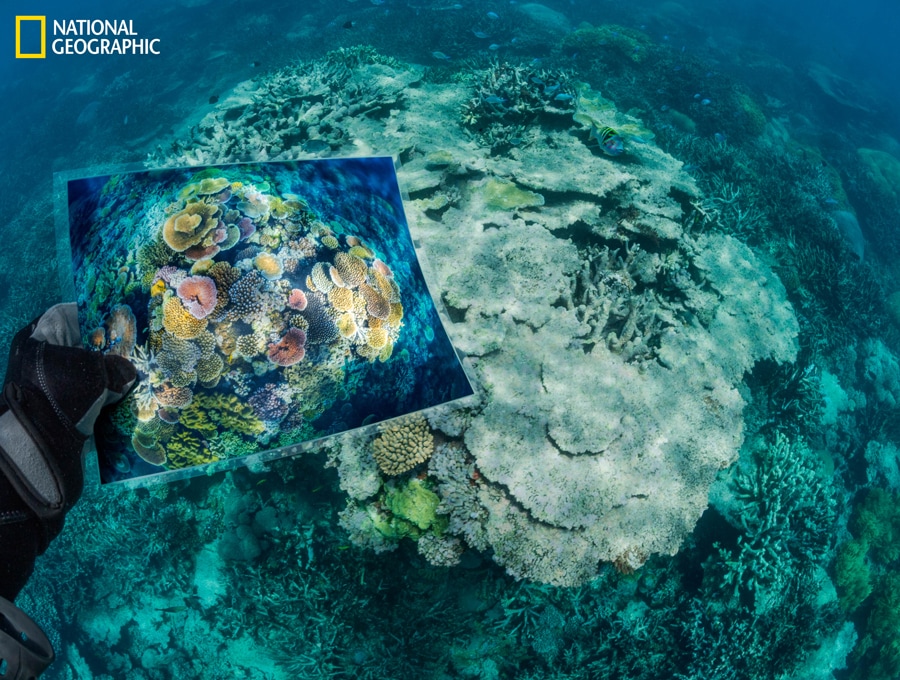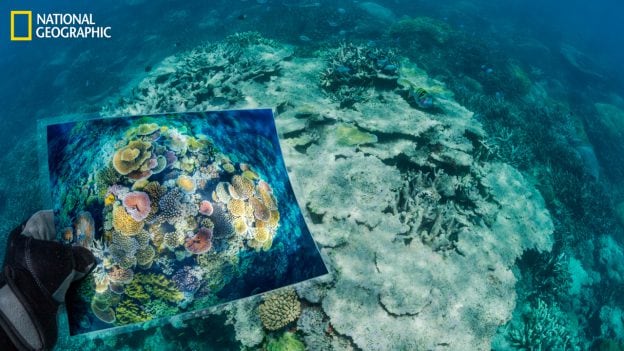In honor of National Photography Month, we bring you more photography from our colleagues at National Geographic and National Geographic Kids.
Today’s feature spotlights photography in one of the least known areas on our planet – the oceans.
One of our most precious global resources, our friends at Nat Geo have spent decades shining a spotlight on the breathtaking beauty of our oceans and the need to protect them.
With in-depth stories and ground-breaking photography and videography, they have consistently pushed the boundaries of oceanic exploration. One such recent project follows underwater photo duo Jennifer Hayes and David Doubilet as they take a unique look at coral reefs, like the Great Barrier Reef in Australia.
“How coral reefs might survive climate change,” a May National Geographic magazine feature, serves as a powerful timelapse photos of corals from 10 years ago vs. today. Jennifer and David took old pictures of reef, enlarged and water proofed them, and then went scuba diving in the exact same spot. They then held the “before” pictures next to the same reef, to show the stress these underwater ecosystems are under. The effect is quite dramatic.

These photos (which were part of The Ocean Issue of National Geographic magazine in May), showcase some of the brilliant work that Jennifer and David did.

The story not only addresses how climate change is affecting of our most important oceanic resources, but also highlights efforts from different scientific organizations to find solutions for the challenges facing today’s coral reefs.
About the Team
Renowned underwater photographers, Jennifer and David, are married partners who work together as a team to produce National Geographic stories from equatorial coral reefs to beneath the polar ice. Between them, Jennifer and David have photographed and explored the ocean depths in such places as New Zealand, Canada, Japan, Indonesia, Tasmania, French Polynesia, Scotland, Greenland, and Antarctica.
David has photographed stingrays, sponges, and sleeping sharks in the Caribbean, as well as shipwrecks in the South Pacific, the Atlantic, and at Pearl Harbor. He has produced more than 70 stories for National Geographic magazine and several books, and has received the Explorers Club’s prestigious Lowell Thomas Award and the Lennart Nilsson Award in Photography.
Jennifer is the editor and author of numerous articles on marine environments, with images appearing in countless books, advertising campaigns, and publications such as National Geographic, Sports Illustrated, Sport Diver, DIVE Magazine, Diver, People, Alert Diver and Ocean Geographic. She also is co-author / photographer for Face to Face with Sharks by National Geographic Books and an honorary editor for Ocean Geographic magazine.
For more stories, tips and travelogues from around the natural world, check out NationalGeographic.com/Planet and Kids.NationalGeographic.com. And stay tuned to the Disney Parks Blog for more explorations into the world of photos.

